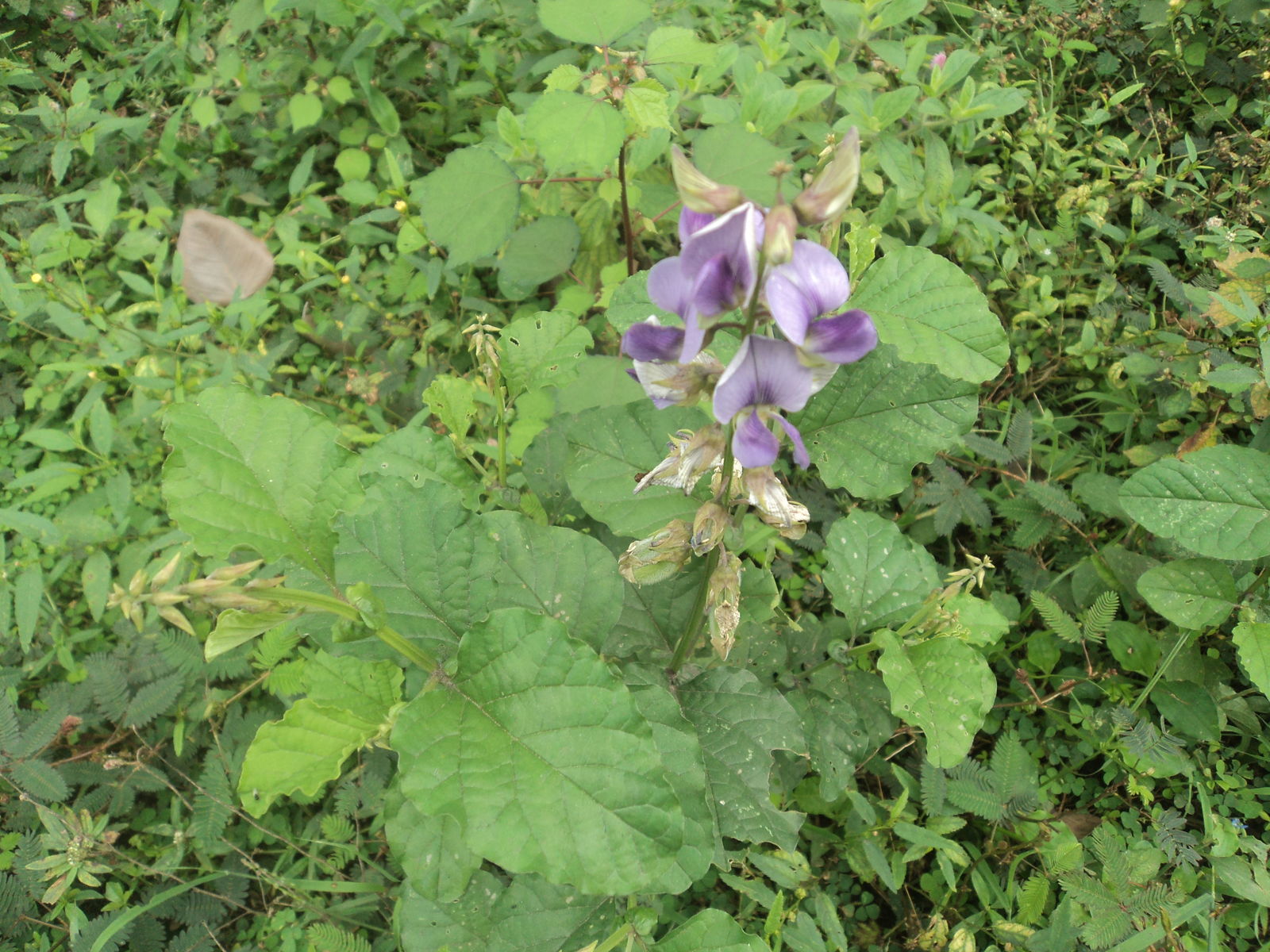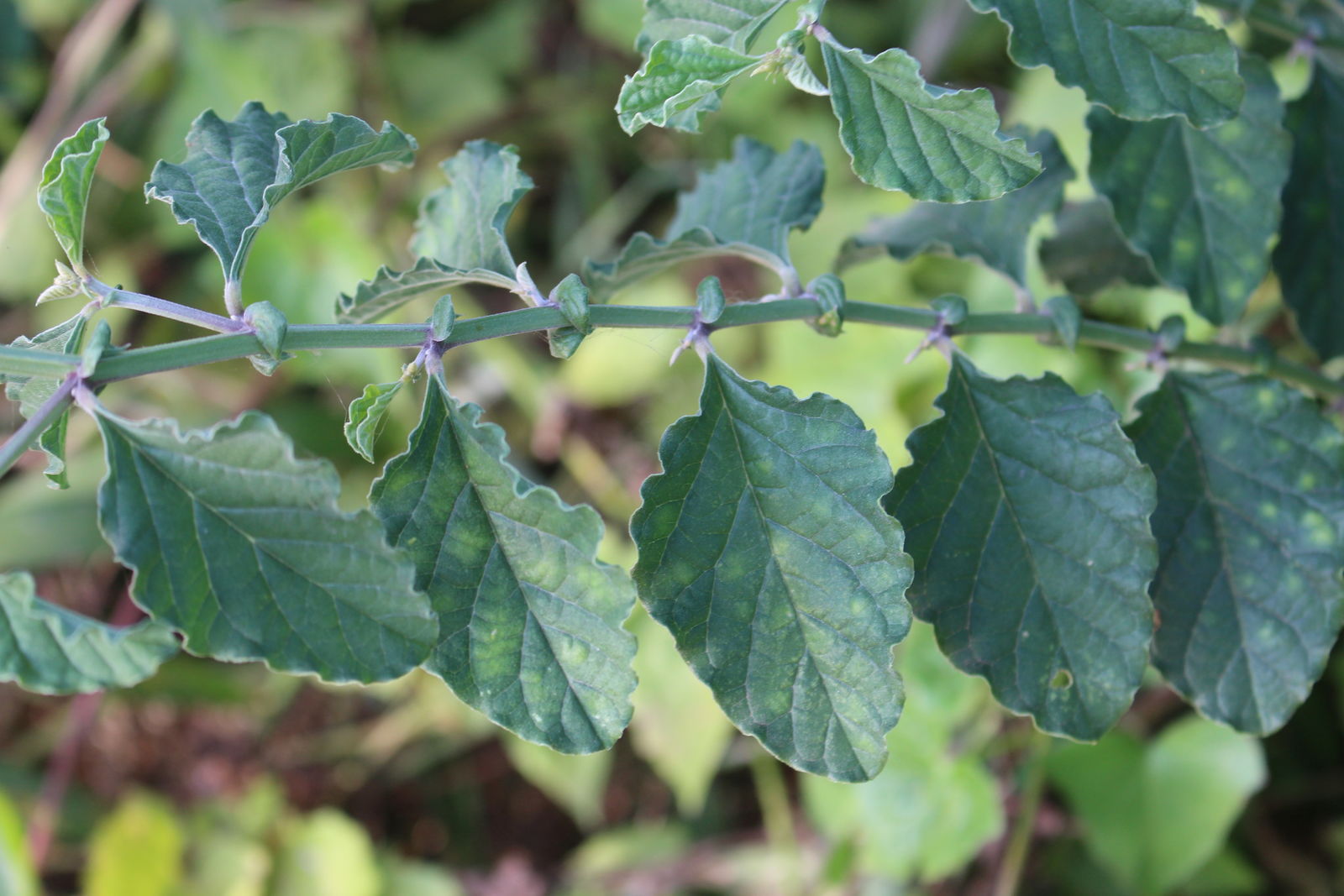Family: Fabaceae
Author: L.
Bibliography: Sp. pl. 2:715. 1753
Year: 1753
Status: accepted
Rank: species
Genus: Crotalaria
Vegetable: False
Observations: Trop. & Subtrop. Asia to N. Australia
Description
The Blue-flower rattlepod, scientifically known as Crotalaria verrucosa, is a striking member of the Fabaceae family. First recorded in the species plantarum (Sp. pl. 2:715) by Carl Linnaeus in 1753, this plant showcases distinct characteristics that make it a noteworthy specimen in the world of botany.
Native to the tropical and subtropical regions stretching from Asia to Northern Australia, the Blue-flower rattlepod thrives in warm climates. It is an adaptable species, commonly found in a variety of habitats including roadsides, grasslands, and open forest areas. Renowned for its beautiful and vivid blue flowers, Crotalaria verrucosa not only adds visual appeal to its surroundings but also serves an essential role in its ecosystem.
This plant features bright, pea-like flowers, a hallmark of the Fabaceae family, which are an important attraction for pollinators such as bees and butterflies. The blooms, typically appearing in clusters, have a pleasing aesthetic with their vibrant hue that stands out against the green foliage. Alongside its ornamental value, the leaves of Crotalaria verrucosa are rich in nitrogen, promoting soil fertility through the natural process of nitrogen fixation – a common feature among legumes.
In its natural habitats, the Blue-flower rattlepod is known for its resilience. It can withstand varied climatic conditions and soil types, demonstrating remarkable versatility. Furthermore, it contributes significantly to local biodiversity by providing habitat and nourishment for a range of insects and small animals.
In summary, Crotalaria verrucosa, or the Blue-flower rattlepod, is a plant of considerable ecological and visual importance. Its vibrant blue flowers and robust adaptability make it an outstanding representative of the Fabaceae family, enhancing both the environment and the botanical diversity of tropical and subtropical regions from Asia to Northern Australia.
Common Names
Eng: blue rattlesnake, blue-flower rattlepod, purple popbush
Msa: kacang reriang
En: Blue-flower rattlepod, Blue rattlesnake, Purple Popbush, Blue Rattleweed, Blue Rattle-box, Blue Rattlepod, Blue-Flowered Rattlepod, Cascavelle á Fleurs Bleues, Purple Rattlebox, Sweet Pea, Tooth-Leaved Rattlepod, Warty Crotalaria, Warty Rattlebox, Blue Andana
Bn: বনশণ
Zh: 多疣猪屎豆, 大葉野百合
Fr: Crotalaire verruqueuse, Cascavelle Bleu, Cascavelle à fleurs bleues
Ms: Kacang reriang
Ml: നീല കിലുകിലുപ്പ
Ne: शोभापुष्प
Zh-tw: 大葉野百合
Ta: பகன்றை
Synonyms
- Crotalaria flexuosa (Moench)
- Crotalaria mollis (Weinm.)
- Crotalaria verrucosa var. acuminata (DC.)
- Crotalaria verrucosa var. genuina (Stehlé)
- Crotalaria caerulea (Jacq.)
- Anisanthera hastata (Raf.)
- Crotalaria hastata (Steud.)
- Crotalaria angulosa (Lam.)
- Quirosia anceps (Blanco)
- Phaseolus bulae (Blanco)
- Crotalaria paramariboensis (Miq.)
- Anisanthera versicolor (Raf.)
- Crotalaria coerulea (Bedd.)
- Crotalaria verrucosa var. obtusa (DC.)
Distribution
- Assam (native)
- Bangladesh (native)
- Bismarck Archipelago (native)
- Borneo (native)
- Cambodia (native)
- China Southeast (native)
- East Himalaya (native)
- Hainan (native)
- India (native)
- Jawa (native)
- Laccadive Is. (native)
- Laos (native)
- Lesser Sunda Is. (native)
- Malaya (native)
- Maluku (native)
- Myanmar (native)
- Nepal (native)
- New Guinea (native)
- Nicaragua (native)
- Northern Territory (native)
- Panamá (native)
- Philippines (native)
- Queensland (native)
- Sri Lanka (native)
- Sulawesi (native)
- Sumatera (native)
- Taiwan (native)
- Thailand (native)
- Vietnam (native)
- West Himalaya (native)
- Western Australia (native)
- Bahamas (introduced)
- Belize (introduced)
- Brazil Southeast (introduced)
- Cayman Is. (introduced)
- Colombia (introduced)
- Cook Is. (introduced)
- Costa Rica (introduced)
- Cuba (introduced)
- Dominican Republic (introduced)
- Gabon (introduced)
- Guatemala (introduced)
- Guyana (introduced)
- Haiti (introduced)
- Honduras (introduced)
- Jamaica (introduced)
- Leeward Is. (introduced)
- Madagascar (introduced)
- Mauritius (introduced)
- Nigeria (introduced)
- Niue (introduced)
- Puerto Rico (introduced)
- Réunion (introduced)
- Samoa (introduced)
- Sierra Leone (introduced)
- Society Is. (introduced)
- Southwest Caribbean (introduced)
- Suriname (introduced)
- Tanzania (introduced)
- Trinidad-Tobago (introduced)
- Tuamotu (introduced)
- Uganda (introduced)
- Windward Is. (introduced)
- Zimbabwe (introduced)
Additional Images
Flower
Taken Jan 22, 2014 by Tela Botanica − Liliane ROUBAUDI (cc-by-sa)
Taken Jan 22, 2014 by Tela Botanica − Liliane ROUBAUDI (cc-by-sa)
Taken Jan 22, 2014 by Tela Botanica − Liliane ROUBAUDI (cc-by-sa)
Taken May 18, 2019 by Aom M (cc-by-sa)
Taken Dec 14, 2020 by Jhansisri uttaravall (cc-by-sa)
Fruit
Taken Dec 25, 2020 by Jhansisri uttaravall (cc-by-sa)
Taken Dec 30, 2008 by Tela Botanica − Liliane Roubaudi (cc-by-sa)
Taken Jan 22, 2014 by Tela Botanica − Liliane ROUBAUDI (cc-by-sa)
Taken Jan 22, 2014 by Tela Botanica − Liliane ROUBAUDI (cc-by-sa)
Taken Jan 22, 2014 by Tela Botanica − Liliane ROUBAUDI (cc-by-sa)
Leaf
Taken Jan 16, 2021 by Tharunoju Laxman kumar (cc-by-sa)
Taken Nov 16, 2022 by Narendra Sahu (cc-by-sa)
Taken Jan 9, 2022 by Narendra Sahu (cc-by-sa)
Taken Jun 30, 2020 by Aurélie vigouroux (cc-by-sa)
Taken Jan 1, 1900 by EOL − Keystone Foundation (cc-by)
Habit
Taken Jan 1, 1900 by EOL − Keystone Foundation (cc-by)
Bark
Taken Jan 1, 1900 by EOL − Acevedo, P. (cc-by-nc-sa)
Other
Taken Dec 30, 2008 by Tela Botanica − Liliane Roubaudi (cc-by-sa)

© copyright of the Board of Trustees of the Royal Botanic Gardens, Kew.

© copyright of the Board of Trustees of the Royal Botanic Gardens, Kew.

© copyright of the Board of Trustees of the Royal Botanic Gardens, Kew.
Sources
- WFO (No URL)
- IPNI (No URL)
- GBIF (https://www.gbif.org/species/2942654)
- POWO (http://powo.science.kew.org/taxon/urn:lsid:ipni.org:names:489042-1)
- PlantNet (https://identify.plantnet.org/species/the-plant-list/Crotalaria verrucosa L.)
Specifications
Growth habit>: Forb/herb, Subshrub


















